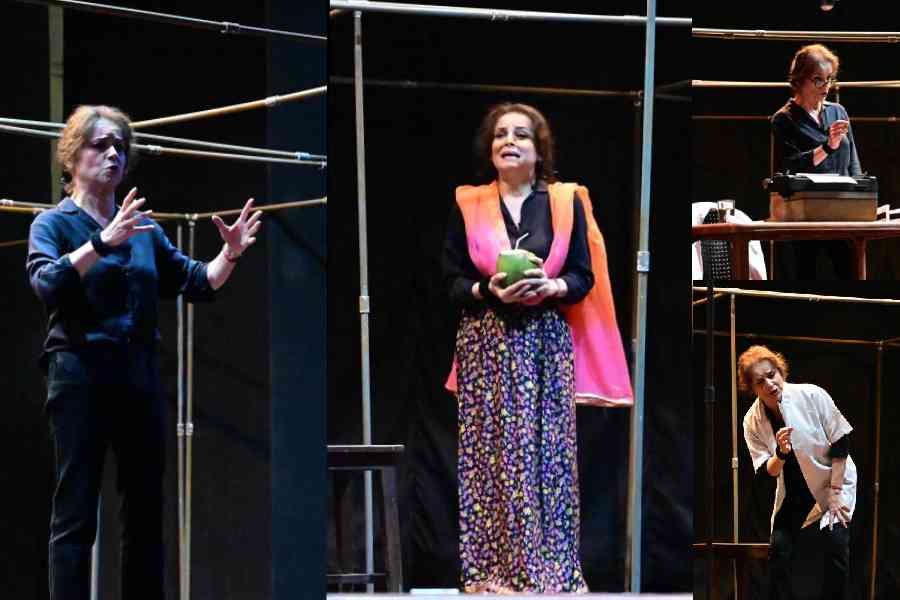At a time when the majority of the city has swallowed its rage and grief, it is imperative that we do not forget that the women of our country are still not safe regardless of where they are. A woman is raped every four minutes in India, but the fact that most of these cases are never reported ought to be enough to make us sit up and pay greater heed to the situation. This conversation has branched off into various other directions in the aftermath of the RG Kar incident; the question of whether women are safe in their own workplaces has been raised yet again. In light of this, it becomes crucial to revisit some of the most harrowing instances that have highlighted this systemic failure to protect women over the years, even in environments presumed to safeguard their protection.
Aruna Shanbaug lived 42 years of her life in a vegetative state after being attacked with a dog chain and raped as a 25-year-old at the King Edward Memorial Hospital where she worked in Mumbai in 1973. Passing away less than a decade ago in 2015, Shanbaug’s case has previously brought about nationwide uproar in terms of debates surrounding sexual violence and the implementation of euthanasia, her story highlighting not only the failure of institutions to protect women but also the prolonged suffering that victims endure in the absence of justice. The debates her case had sparked led to extensive discussions on legal reforms, better enforcement of workplace safety measures, and the ethical complexities surrounding end-of-life care, and her life story remains a deeply troubling reminder of the work still needed to ensure safety, dignity, and justice for women across the country.
In 2009, journalist Pinki Virani filed a petition with the Supreme Court on Shanbaug’s behalf, arguing that her continued existence in a persistent vegetative state (PVS) was a violation of her right to live in and with dignity. The court rejected the plea to discontinue Shanbaug’s life support, but on March 7, 2011, in a landmark judgement, issued a set of guidelines legalising passive euthanasia in India. This decision marked a significant turning point in the country’s medico-legal and ethical scenario and was hailed as a compassionate step towards respecting individual dignity in cases of terminal illness or irreversible conditions.
Virani’s book Aruna’s Story: The True Account of a Rape and its Aftermath is an account of the Shanbaug case, not only recounting the story of Shanbaug’s life but also going into the depths of the political and social repercussions of the torture that was inflicted upon her. Left incapable of sight, speech, and movement, yet hopelessly susceptible to physical experiences like pain and hunger, Shanbaug remained in pitiable conditions in the very hospital where she nursed people back to health while her rapist, a janitor at the same hospital, walked a free man after a mere seven years in prison on accusations as banal as robbery and assault and not rape, attempt to murder, or unnatural sexual offense, which would have guaranteed him life imprisonment. In an ironic twist of fate, the perpetrator, Sohanlal Bhartha Valmiki, was released on Gandhi Jayanti in 1980, the birthday of the man who always championed non-violence and peace.
Based on Virani’s book is Arvind Gaur’s play Aruna’s Story, featuring actress Lushin Dubey in a production that has her playing 18 roles over the span of an hour and 15 minutes. A solo performance in which Dubey shines, the play, while being extremely sombre in its theme and tone, must be lauded for the honesty with which it delivers Shanbaug’s story; choosing, in Gaur’s own words, not to focus on her life as a victim caged by circumstance but instead on the dreams, wishes and aspirations she had harboured as a young girl before cruelty wounded her forever. The statements “represents the ripples created in society by the case at the time and the prevalent discourse surrounding the rights of women in general” and “paints a dream-like, almost surreal portrait of Aruna the human before we lost her” are two statements that may co-exist in this scenario, because that is what the play does — it is harsh and brutal as it is beautiful and moving, with Gaur’s direction perfectly complementing Dubey’s effortless prowess on the stage.
Presented in Calcutta on two separate occasions recently — the first at the Tollygunge Club on November 30 and the second at Loreto House, with Open Doors Event Management in association with Loreto House Alumnae Association, on December 1 — Aruna’s Story is a remarkable piece of artistic work, jarring you right from the first scene (in which the act of the attack itself is portrayed, with the lights out and the screams, verbal abuse and physical movements more clear than enough) till the end, when the production brings the curtains down with the question we have been asking ourselves all these past months, since August 9; the question we women ask ourselves every day of our lives — are we safe in our work environments? Are we safe anywhere?
The answer is far too grim, but Gaur balances the harsher elements of his play with the tenderness and delicacy one would usually not expect from a story as blunt as this. Especially moving are the scenes with Shanbaug’s fiance Sundeep Sardesai, Dubey portraying a man whose hopes are dashed but whose love isn’t in the slightest — there is an inexplicable vulnerability in those scenes, countered by the more politically-charged ones that wade the waters of social justice, evident in moments that feature Dubey as the other nurses in the hospital, the narrator of the play, and what is meant to replicate Pinki Virani herself. Also tear-inducing is every scene in which we get to see Aruna — the real Aruna, the Aruna the world lost — be herself: a young girl unencumbered by selfish desires, dreaming to become a nurse, to attain a scholarship, to live up to her mother’s hopes and expectations; to live, to live, to live.
Dubey is remarkable, as always (many will know her as Alyque Padamsee’s Lady Macbeth, and from Zoya Akhtar’s Made in Heaven), effortlessly transitioning from one role to the next, and the story itself is whole, coherent, and put together, delivering exactly what it promises. There are no moments of lag or disconnect — every scene feels driven by a sense of purpose, and Gaur’s direction ensures that each character is distinct, lending authenticity and character to the narrative. We, for one, walked out with a lump in our throat — in today’s day and age, when girls are still victims of the grossest forms of patriarchy, statements as powerful as art are the only way to have our voices heard. This play is one of them, showing what exactly is rotten in the state of the world — a deeply ingrained culture of misogyny, neglect, and indifference to the suffering of women. Art like this not only tells stories but also becomes a catalyst for change, urging us to take collective responsibility for creating a safer, more just world for women everywhere.











